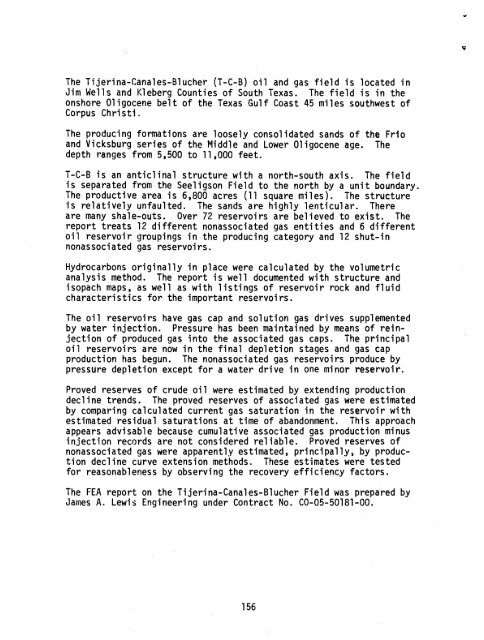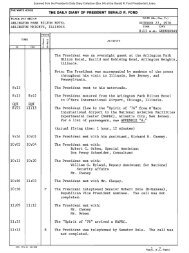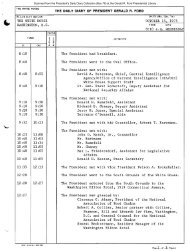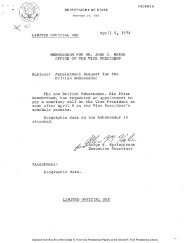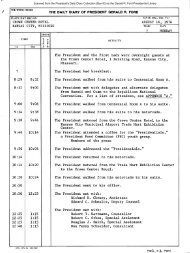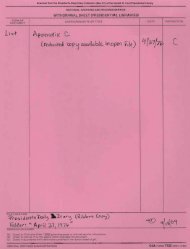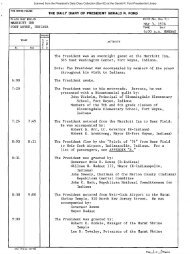October 31, 1975 - Gerald R. Ford Presidential Library and Museum
October 31, 1975 - Gerald R. Ford Presidential Library and Museum
October 31, 1975 - Gerald R. Ford Presidential Library and Museum
Create successful ePaper yourself
Turn your PDF publications into a flip-book with our unique Google optimized e-Paper software.
The Tijerina-Cana1es-B1ucher (T-C-B) oil <strong>and</strong> gas field is located in<br />
Jim Wells <strong>and</strong> K1eberg Counties of South Texas. The field is in the<br />
onshore Oligocene belt of the Texas Gulf Coast 45 miles southwest of<br />
Corpus Christi.<br />
The producing formations are loosely consolidated s<strong>and</strong>s of the Frio<br />
<strong>and</strong> Vicksburg series of the Middle <strong>and</strong> Lower Oligocene age. The<br />
depth ranges from 5,500 to 11,000 feet.<br />
T-C-B is an anticlinal structure with a north-south axis. The field<br />
is separated from the See1igson Field to the north by a unit boundary.<br />
The productive area is 6,800 acres (11 square miles). The structure<br />
is relatively unfau1ted. The s<strong>and</strong>s are highly lenticular. There<br />
are many shale-outs. Over 72 reservoirs are believed to exist. The<br />
report treats 12 different nonassociated gas entities <strong>and</strong> 6 different<br />
oil reservoir groupings in the producing category <strong>and</strong> 12 shut-in<br />
nonassociated gas reservoirs.<br />
Hydrocarbons originally in place were calculated by the volumetric<br />
analysis method. The report is well documented with structure <strong>and</strong><br />
isopach maps, as well as with listings of reservoir rock <strong>and</strong> fluid<br />
characteristics for the important reservoirs.<br />
The oil reservoirs have gas cap <strong>and</strong> solution gas drives supplemented<br />
by water injection. Pressure has been maintained by means of reinjection<br />
of produced gas into the associated gas caps. The principal<br />
oil reservoirs are now in the final depletion stages <strong>and</strong> gas cap<br />
production has begun. The nonassociated gas reservoirs produce by<br />
pressure depletion except for a water drive in one minor reservoir.<br />
Proved reserves of crude oil were estimated by extending production<br />
decline trends. The proved reserves of associated gas were estimated<br />
by comparing calculated current gas saturation in the reservoir with<br />
estimated residual saturations at time of ab<strong>and</strong>onment. This approach<br />
appears advisable because cumulative associated gas production minus<br />
injection records are not considered reliable. Proved reserves of<br />
nonassociated gas were apparently estimated, principally, by production<br />
decline curve extension methods. These estimates were tested<br />
for reasonableness by observing the recovery efficiency factors.<br />
The FEA report on the Tijerina-Cana1es-B1ucher Field was prepared by<br />
James A. Lewis Engineering under Contract No. CO-05-5018l-00.<br />
156


